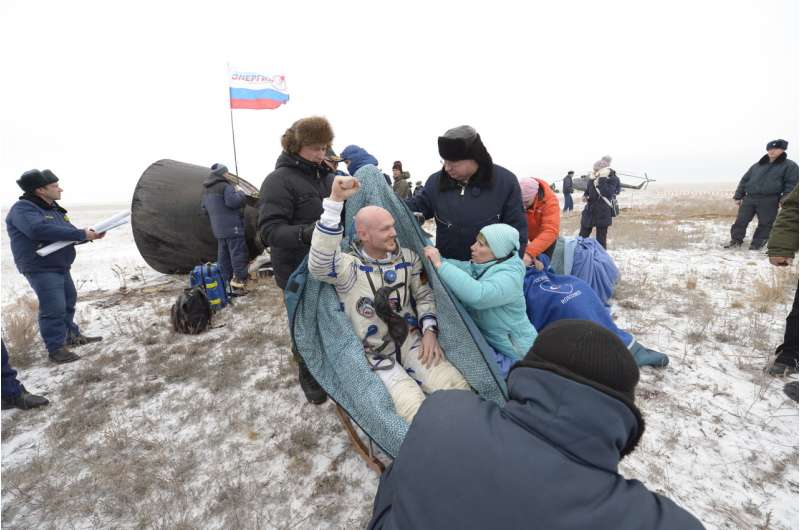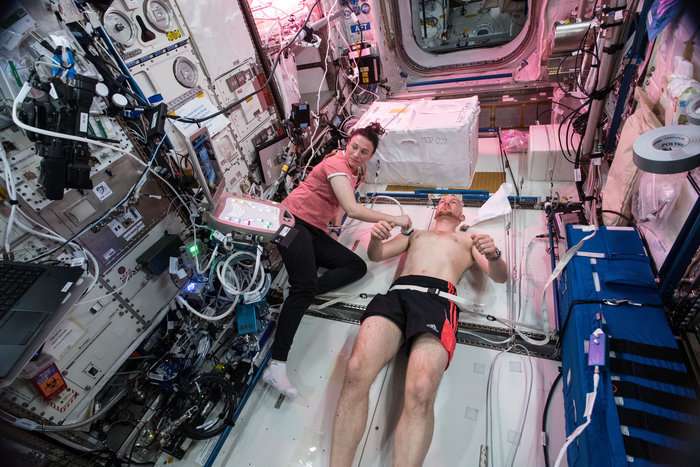An astronaut returns to Earth

ESA astronaut Alexander Gerst will return to Earth alongside NASA astronaut Serena Auñón-Chancellor and Russian cosmonaut Sergei Prokopiev on 20 December. After more than six months living and working on the International Space Station, their Soyuz is expected to touch down in Kazakhstan at around 05:06 GMT (06:06 CET).
The trio's journey from the Space Station to Earth will take approximately three hours, during which the speed of their Soyuz capsule will reduce from 28 000 to 0 km/h.
It will be a bumpy ride as they reenter the atmosphere and jettison parts of their spacecraft. Parachutes will deploy and retrorockets will fire an instant before touchdown to slow the capsule for a dramatic but safe landing.
Once the Soyuz lands, ground teams from Russia, ESA and NASA will help the astronauts out of their capsule and into chairs. From there, ESA flight surgeons and crew support teams will step in to take good care of Alexander's health, comfort and safety as he his flies back to Cologne, Germany.
From Kazakhstan to Cologne
Once Alexander has passed medical checks, he will be helicoptered to Karaganda, Kazakhstan, where he will take part in a traditional welcoming ceremony alongside Serena and Sergei before boarding a NASA plane to Norway with Serena while Sergei heads to Star City near Moscow, Russia.
Alexander will say farewell to Serena in Norway as he is transferred to an awaiting ESA plane. This marks the final leg of Alexander's journey to Cologne.

ESA flight surgeon Sergi Vaquer says there are a number of medical considerations when returning an astronaut to Earth. These include cardiovascular issues, weakened bones, muscle loss, and vestibular disturbances which can cause a loss of balance and feelings of nausea. An astronaut's immune system may also be compromised, so it is important to follow strict hygiene procedures and avoid contact with anyone who may be unwell.
In spite of this, Sergi says ESA astronauts come back in good health and he expects Alexander to readapt quickly to life on Earth.
"I believe the reason our astronauts are in such good shape when they return is because they prepare so intensely before their mission, but also thanks to the physical exercise programme they undergo while in orbit," Sergi says. "Exercise is a key medical countermeasure and ESA's specialists play a vital role in helping the astronaut reduce many negative effects of spaceflight."
A team effort
Upon his return, Alexander will undertake a minimum 21 days of rehabilitation under the care of ESA doctors and exercise specialists, supported by facilities at the German Aerospace Centre's state-of-the-art ':envihab' facility, next to ESA's astronaut centre.
He will also continue to provide data for researchers as he completes ground-based sessions of experiments performed on the Station.
ESA project manager of Alexander's return to Europe Stephane Ghiste says this demonstrates the way in which many different teams work together to ensure an astronaut's safe return.
"These kinds of operations are only possible thanks to the cooperation and dedication of several ESA teams including space medicine, crew support, training, communication and the EAC office in Star City, Moscow, as well as close collaboration with our external partners NASA, Roscosmos and German Aerospace Centre – DLR," he adds.
Provided by European Space Agency




















